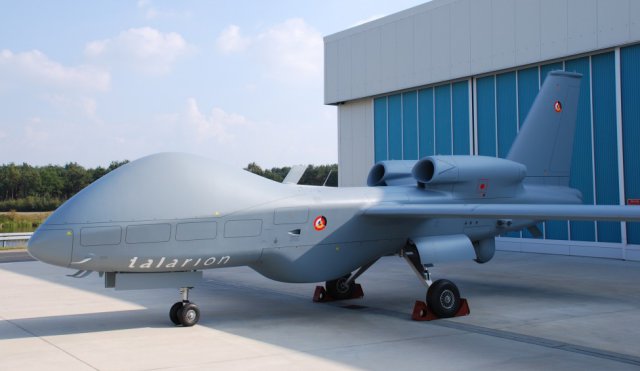 France and Germany are set to renew efforts to work on a joint unmanned aircraft system, supporting European Aeronautic, Defence & Space Co. (EADS) in its attempt to compete in a market now dominated by Israeli and U.S. companies.
France and Germany are set to renew efforts to work on a joint unmanned aircraft system, supporting European Aeronautic, Defence & Space Co. (EADS) in its attempt to compete in a market now dominated by Israeli and U.S. companies.
Efforts to strengthen ties were probably discussed yesterday when French Defence Minister Jean-Yves Le Drian met his German counterpart Thomas de Maiziere, Christian Schmidt, according to state secretary for Germany’s Ministry of Defence. Senior politicians gathered to celebrate a treaty signed in 1963 that sealed the two countries’ friendship after World War II.
“There is a desire to explore development of a European UAS,” Schmidt said in an interview in Berlin. “A European UAS solution has to have more capability than current U.S. systems to make sense,” such as enhanced communications so UAS can safely fly in civil airspace with airliners, he said.
A Franco-German agreement would come about two years after France committed to working closely with the U.K. on unmanned aircraft programmes. That pact saw BAE Systems Plc and Dassault Aviation SA join up to develop a system, in a move that sidelined EADS, the parent of Airbus SAS.
EADS said last year that it wasn’t continuing with its own Talarion after failing to win government funding.
Although France and the U.K. have moved forward with BAE and Dassault on designing a futuristic combat UAS, progress on the 1 billion euros ($1.33 billion) Telemos surveillance system stalled after Francois Hollande came to power last year.
The French government is undertaking a strategic review of its defence needs, and Le Drian, the defence minister, said in May that he’ll “go back to square one” on plans to build military UAS.
The French and German air forces now operate similar unmanned aircraft in Afghanistan, based on Israel Aerospace Industries Ltd.’s Heron. Both are exploring what bridging options need to be pursued before a European model is ready around the end of the decade.
Options include continuing to fly current systems, acquiring Heron-TPs, a larger model IAI is selling, or purchasing the General Atomics Aeronautical Systems Inc. Reaper.
Source: Bloomberg

“A European UAS solution has to have more capability than current U.S. systems to make sense,” such as enhanced communications so UAS can safely fly in civil airspace with airliners, Christian Schmidt said.
The wrong opinion still persist that there is a “civil” and a “military” air space. In reality the air space is unique and aircraft fly in it with different rules depending on their civil/private registration (GAT=general air traffic) or their military/state registration (OAT=operational air traffic), NOT depending on being an airliner or an unmanned aircraft. So a military UAS can fly in the airspace provided it is able to comply with OAT rules as any other military aircraft.